Chloe Cull – 11 June, 2015
'Rakau Tipua', 'Rakau Tipua #2' and 'Patupaiarehe' are unique in their use of whakairo and kōwhaiwhai together. Traditionally, kōwhaiwhai was considered to be a temporary method of decoration while whakairo was considered to be permanent. However, post-colonially kōwhaiwhai has become a more permanent form of decoration through the growth of meeting houses and the increasing use of Western artmaking practices and art conservation.
Currently showing at Page Blackie Gallery in Wellington is a slick presentation of contemporary whakairo (carving) from Palmerston North based artist, Ngatai Taepa (Te Ati Awa, Te Arawa). Taepa’s current series of work, Tipua (supernatural, strange), continues his explorations of kōwhaiwhai (decorative patterning) and carving forms within the parameters of the white-walled contemporary gallery space.
Taepa’s work rides the spectrum of traditional/contemporary in an exhibition that is demonstrative of a bicultural artistic identity. This is shaped by the strength of Taepa’s taha Māori in combination with his place in a contemporary art scene based on a traditionally Western way of making and looking.
The work in Tipua is characterised by Taepa’s impeccable craftsmanship, a shared palette of pale and dark browns and the portrayal of mythical creatures from te ao Māori. A recurring form is Kurangaituku, a bird-woman from Te Arawa mythology that is known for the imprisonment of Te Arawa ancestor Hatupatu, shortly after his arrival in Aotearoa from Hawaiki. Hatupatu managed to escape Kurangaituku’s clutches by jumping over hot springs, while Kurangaituku was burnt to death. In Taepa’s works she is depicted in flight, e rere ana.
Also featured in three of Taepa’s works is Marakihau, a mythical sea creature that is a common subject in Māori carving. Taepa emphasises simplicity in form within these works by using bold line, geometric shapes and colour to highlight positive and negative space. The basic form and recurring motifs, such as the tail and mouth, mirror the aesthetic of traditional whakairo while Taepa’s choice of materials and colour maintain the contemporary kaupapa of the exhibition.
In Purerehua (butterfly, moth), the form of the butterfly has been flattened and reduced to a series of shapes. Here Taepa has moved away from the figurative focus of the other works to produce what is, in my opinion, one of the most successful and conceptually refined of the series.
Three other works in the exhibition utilise the symmetry, rotation and reflection of kōwhaiwhai in a manner characteristic of much of Taepa’s work. Kōwhaiwhai has long been an interest of this artist both in terms of visual possibilities and in the keeping of and preservation of matauranga Māori (Māori knowledge). According to Taepa, “Kōwhaiwhai is an expression of the way our ancestors saw the world in their time. Their achievement, using positive and negative spaces, was to have the colours interact simultaneously - as opposed to how most people think now. Now we’re taught to see the positive space and not the space around it. It’s one of the simple conventions of kōwhaiwhai, but for me it’s achieving excellence through simplicity. How do you get to that level? That’s what fires me up.” (1)
Rakau Tipua, Rakau Tipua #2 and Patupaiarehe demonstrate these concepts within rectangular wall hangings that focus specifically on colour to highlight positive and negative space and shape. These three works are unique in their use of whakairo and kōwhaiwhai together. Traditionally, kōwhaiwhai was considered to be a temporary method of decoration while whakairo was considered to be permanent. However, post-colonially kōwhaiwhai has become a more permanent form of decoration through the growth of meeting houses and the increasing use of Western artmaking practices and art conservation.
Taepa emphasises simplicity in form and composition with his Tipua series. While he aims to reflect a history of traditional Māori artmaking, he also extends the possibilities of these forms using Western artmaking practices and materials. This approach to Māori concepts and imagery within contemporary art was developed after the 1950s by a group of Māori art educators referred to by Jonathan Mane-Wheoki as the Māori Modernists. As the son of successful clay worker Wi Taepa, Ngatai was exposed to subsequent generations of contemporary Māori artists from a young age.
On viewing Tipua, I missed the playfulness previously apparent in Taepa’s 2011 pop art inspired series, Colour, Value and Perspective. I had also hoped for something a little more challenging - as seen in his collaborative sculpture from 2011, Ka Kata te Po. In that item we saw Saffronn Te Ratana, Hemi Macgregor and Taepa make politically relevant and poignant work that extended the viewer visually and intellectually.
In saying this, Tipua demonstrates a type of artmaking that is aware of its surroundings and its audience. Taepa’s work at Page Blackie certainly suits the gallery space, but is also easily imagined on the walls of a house or marae. His work is increasingly accessible to a broad audience, while also maintaining a strong connection to its Māori origins. In terms of pushing the boundaries of contemporary practice, some of the earlier work has achieved this more. However, in terms of accessibility, Taepa’s new series projects liveability and an aesthetic that I, and I’m sure many others, find particularly appealing.
Chloe Cull
(1) Ngataiharuru Taepa in conversation with Huhana Smith, in Huhana Smith (gen. ed.), Taiāwhio II: Contemporary Māori artists, 18 New Conversations (Wellington: Te Papa Press, 2007) pp. 228-243.
Recent Comments
Chloe Cull
To hear more about the contemporary significance of kowhaiwhai check out the following forum at Pataka on June 14th. https://www.pataka.org.nz/2014/06/artists-forum-exploring-kowhaiwhai/ ...
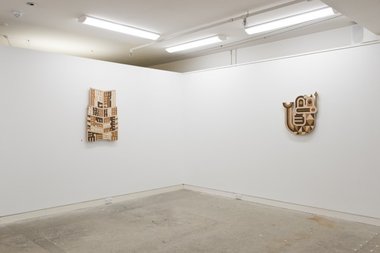
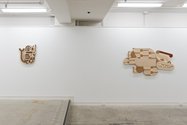


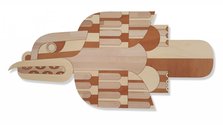
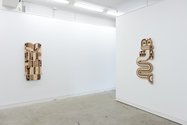

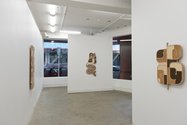

 Two Rooms presents a program of residencies and projects
Two Rooms presents a program of residencies and projects Advertising in this column
Advertising in this column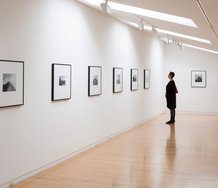
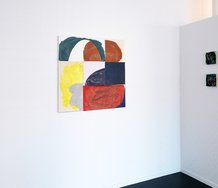
This Discussion has 1 comment.
Comment
Chloe Cull, 9:21 p.m. 11 June, 2015 #
To hear more about the contemporary significance of kowhaiwhai check out the following forum at Pataka on June 14th. https://www.pataka.org.nz/2014/06/artists-forum-exploring-kowhaiwhai/
Also on show at Pataka from next week is a 12 year survey of Ngatai Taepa's work, Te Tini a Pitau, specifically his explorations of kowhaiwhai.
http://www.pataka.org.nz/2014/08/ngataiharuru-taepa/
Participate
Register to Participate.
Sign in
Sign in to an existing account.